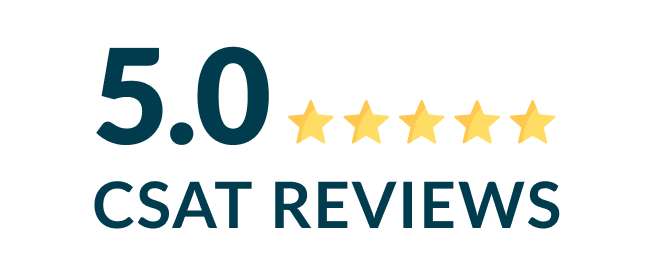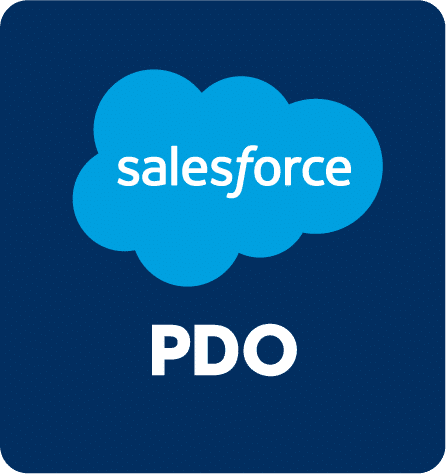
- Salesforce
What’s New in Latest Salesforce Release? Surprising Updates You Can’t Miss
Still struggling to keep up with Salesforce’s constant updates? Salesforce rolls out three updates a year sounds manageable—until the backlog starts slowing your team down.. The latest Salesforce releases—Spring ’25 and Summer ’25 aren’t just routine updates. They come with critical changes like the retirement of API versions 21.0 to 30.0 and a mandatory shift to Lightning Knowledge. But beyond the technical housekeeping, this rollout introduces powerful tools that directly impact how your sales, service, and dev teams work.
From more innovative meeting prep and real-time sentiment analysis to advanced file handling in Apex and AI-generated marketing, this update could be a turning point. So, how will these changes affect your team, and how can you actually benefit from them instead of falling behind? Let’s break it down.
How Latest Salesforce Features Boost Sales Team Productivity
Sales teams waste too much time on tasks that don’t bring in revenue. Research shows that 72% of sellers’ time is spent on activities that don’t directly generate revenue. Salesforce has added new features to help teams focus on what truly matters.
Remote sales teams can now work better with Salesforce Meetings. The Meeting Digest brings together essential information before meetings start. It shows attendee details and activity timelines. The Meeting Studio lets reps give engaging virtual presentations smoothly. They can show their webcam next to their presentation materials without clumsy switches between content.
Slack’s integration with Salesforce makes teamwork easier. This combination brings CRM data right into chat channels. Teams can:
- Act with context as CRM data flows into Slack conversations
- Work together even when apart through flexible communication
- Share updates during convenient hours across time zones
Sales Cloud Enterprise editions now include Account Plans at no extra cost. Sales teams can build account-based selling strategies. Teams can set goals, check progress, and find new sales opportunities. They use SWOT analysis frameworks and competitive landscape sections to do this.
Einstein Conversation Insights helps teams spot topics customers care about most. Better communication channels help teams work together across departments – which sales leaders rate as their top strategy for growth.
Sales managers often lack time for coaching. Call coaching software highlights key insights from sales calls to show where improvement matters most. These tools help address a worrying trend – 72% of sellers don’t think they’ll reach their quota next year.
Enhancing Customer Service with New Salesforce CRM Updates
1.  Better Feedback, Smarter Service
Better Feedback, Smarter Service
Salesforce’s latest release tackles rising customer expectations with powerful service improvements that focus on gathering and using customer feedback. The new Feedback Management solution sits at the heart of these improvements and helps businesses create custom lifecycle maps and trip analytics to define key customer interactions.
2.  Real-Time Sentiment Detection in Service Cloud
Real-Time Sentiment Detection in Service Cloud
Salesforce has made a breakthrough in handling customer sentiment. Service Cloud now monitors conversations in real-time to detect whether customer emotions are positive, negative, or neutral throughout interactions. These sentiment signals help review agent performance and identify coaching opportunities.
3. Agentforce: AI That Works Around the Clock
Salesforce’s AI assistant for CRM, Agentforce, marks a significant advancement in service capabilities. This technology will resolve 50% of Salesforce’s customer service requests. Service representatives can now:
- Answer customer questions 24/7 across multiple channels, including WhatsApp, Apple Messages for Business, and SMS
- Generate accurate, personalized responses grounded in business data
- Create AI-generated summaries of support interactions
- Develop knowledge articles automatically from customer conversations
Example: A small e-commerce brand uses Agentforce to handle late-night customer messages on WhatsApp. Instead of hiring an overnight team, Agentforce responds instantly with helpful, on-brand answers—and even flags unresolved cases for human follow-up in the morning.
4.  Unified Conversations Across All Channels
Unified Conversations Across All Channels
Service Cloud Digital Engagement brings another major improvement by unifying conversational data from different digital channels. The platform has Unified Conversations for WhatsApp that gives service agents access to a customer’s complete conversation history and unified profile.
Teams can now work flexibly with Omni-Channel on Mobile. Employees can respond to customers from any digital channel using the Salesforce mobile app while on the move. Customer data from external channels like KakaoTalk, Discord, and Instagram comes together through the Bring Your Own Channel functionality.
5.  Einstein Conversation Mining
Einstein Conversation Mining
Einstein Conversation Mining works as the brain behind these service improvements. It uses advanced natural language processing to identify common themes, track sentiment, and uncover trends across every customer touchpoint. This helps service teams spot potential issues early and make informed decisions to boost customer satisfaction.
Example: A telecom support team notices a spike in frustrated messages about signal drops. Einstein Conversation Mining flags the trend early, allowing the team to fix the issue proactively—and update help docs before it snowballs into a social media backlash.
Marketing and Developer Innovations in the Latest Salesforce Version
Salesforce’s latest release brings powerful capabilities to developers and marketers through native tools that optimize complex workflows.
Apex Zip Library in the Compression Namespace
The new Apex Zip library in the Compression namespace lets developers create and extract ZIP archive files directly in Apex code. Developers can now compress multiple attachments into a single blob and extract data selectively without uncompressing whole archives.
Example: A logistics app developer adds a one-click export button. With Apex Zip, all shipment docs get zipped and downloaded instantly saving hours of repetitive work.
Lightning Web Component Developers Get Local Dev Boosts
Lightning web component developers will benefit from Local Dev, which is now available for Lightning apps and has entered open beta for Experience Cloud LWR sites. Development speeds up with immediate component previews that update when source code changes. Manual refreshes and deployments are no longer needed. Testing mobile experiences becomes easier with virtual iOS and Android devices through simple CLI commands.
SLDS 2 (Beta): A Modern Design System Upgrade
SLDS 2 (beta) marks the most important overhaul of the Salesforce Lightning Design System, which offers greater flexibility in creating customized experiences. This updated design system has a flexible styling framework with global CSS hooks and an enriched color palette featuring nine new accent options. The new default Cosmos theme reduces cognitive load effectively.
Smarter Marketing Through AI and Personalization
Marketing capabilities have received substantial improvements through AI integration. Agentforce for Marketing combines generative and predictive AI to create comprehensive campaign experiences. Campaign briefs, target audiences, email drafts, and landing pages are generated automatically. Performance analysis runs continuously to optimize results.
Einstein Marketing Intelligence (EMI)
Einstein Marketing Intelligence (EMI) gives marketers a unified dashboard that coordinates marketing data using AI and Data Cloud. The new Einstein Personalization decision engine delivers individual-specific experiences immediately by exploiting unified customer profiles in Data Cloud. Customer behavior triggers personalized interactions automatically.
These improvements to marketing and developer tools showcase Salesforce’s steadfast dedication to improving both technical capabilities and customer engagement tools in its platform.
Conclusion
Salesforce’s Summer ’25 release brings major changes to platform capabilities with important updates that impact sales, service, and development teams of all sizes. A concerning 72% of sellers don’t deal very well with non-revenue-generating tasks, and these updates address this challenge head-on. Sales teams now have tools like Meeting Digest and Meeting Studio at their disposal. Service representatives can access sentiment analysis and AI-powered solutions through Agentforce. Developers get improved capabilities with the Apex Zip library and Lightning Local Dev tools to streamline their workflow.
The platform shows its strength in AI integration through Einstein Conversation Mining and Marketing Intelligence. These features provide evidence-based findings that help teams make smarter decisions. Salesforce continues to build a more efficient, intelligent, and user-friendly platform.
Organizations should prepare for these changes now. The retirement of older API versions and the move to Lightning Knowledge need attention. Advayan offers specialized Salesforce services tailored to your goals—from implementation to optimization, integration to ongoing support. We help you stay ahead of the curve while your competitors play catch-up.
Need help turning these updates into a competitive advantage? Let’s talk.







